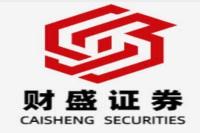EU Anti-Dumping Duty on Chinese Lysine: A Deep Dive into the Implications for the Global Market
Meta Description: Analysis of the EU's preliminary anti-dumping duties on Chinese lysine, its impact on global trade, and the strategic responses of major Chinese producers like Meihua and Fufeng. Explore the future of the lysine market and the implications for food security.
Whoa, hold onto your hats, folks! The EU just dropped a bombshell on the global lysine market. Their preliminary anti-dumping investigation into Chinese lysine exports has resulted in proposed tariffs ranging from a staggering 58.3% to a jaw-dropping 84.8%! This isn't just another trade spat; it's a seismic event that could reshape the landscape of animal feed production and global food security. This isn't your grandpappy's trade war; this is a complex web of geopolitical maneuvers, market dynamics, and corporate strategies playing out on a global stage. We’ll unpack the intricacies, delving into the specifics of the EU's decision, its impact on Chinese producers like Meihua Bioengineering and Fufeng Group, and the broader implications for the global agricultural industry. Get ready for an in-depth analysis that goes beyond the headlines and reveals the real story behind this significant development. We'll explore the potential for increased prices, shifts in market share, and the innovative strategies companies are employing to navigate this turbulent environment. So buckle up, because this journey into the world of lysine is going to be a wild ride! This isn't just about numbers and percentages; it's about the people, the businesses, and the future of food production itself.
The EU's Lysine Tariff: A Game Changer?
The recent preliminary ruling by the European Union (EU) to impose anti-dumping duties on Chinese lysine exports has sent ripples throughout the global amino acid market. The proposed tariffs, ranging from 58.3% to a whopping 84.8%, represent a significant escalation in trade tensions and have triggered a flurry of reactions from industry players and analysts alike. This move isn't a surprise to those who've been following the industry; complaints about dumping have been simmering for some time. But the magnitude of these proposed tariffs is undoubtedly eye-catching.
The EU's decision is based on allegations that Chinese lysine producers have been selling their products in the EU at unfairly low prices, thereby harming European producers. The investigation, initiated in April 2024 following a complaint by METEX, a European lysine producer, resulted in varying tariff rates for different Chinese companies. For instance, Meihua Bioengineering faces the highest proposed tariff at 84.8%, while Fufeng Group and CJ International are facing tariffs of 71.6%, and Epigen Biotech (a subsidiary of Xinghu Science & Technology) faces a lower 58.3% tariff. This disparity highlights the complexities of the investigation and the varying degrees of alleged dumping practices.
This isn't just about trade; it's about food security. Lysine is a crucial amino acid, essential for animal feed. The EU, a significant importer of lysine, is now facing potential supply disruptions and price hikes. This could have knock-on effects on the entire European agricultural sector, particularly the livestock industry. The implications are far-reaching, affecting everything from meat and dairy production to overall food costs for consumers.
Impact on Chinese Lysine Producers: Meihua, Fufeng, and Others
The proposed tariffs will undoubtedly hit Chinese lysine producers hard. China is the world's leading producer of lysine, and the EU represents a significant export market. The high tariffs could significantly reduce the competitiveness of Chinese exports, leading to a drop in sales and profits. However, it's not all doom and gloom. Major players like Meihua Bioengineering and Fufeng Group, with their considerable market share and existing global reach, are likely to adapt and strategize.
Meihua, for example, has already demonstrated its ambition to expand internationally. Their recent announcement of a ¥10.5 billion (approximately €50 million) acquisition of assets from Kyowa Hakko Bio, a prominent Japanese amino acid producer, signals a clear intention to enhance their global footprint and diversify their markets. This move isn't just about mitigating the impact of EU tariffs; it showcases a proactive strategy of long-term international expansion and diversification. Similarly, Fufeng Group, known for its aggressive growth strategy, is likely to explore options for expanding production outside China, perhaps in the Americas, to better serve the European and other international markets.
The impact of the tariffs is already visible in the data. Preliminary figures suggest a slight increase in Chinese lysine exports earlier in 2024, potentially a sign of companies rushing to get their product into the EU market before the tariffs take effect. This "rush to the exit," while providing a short-term boost, is unlikely to be sustainable in the long term.
Global Market Dynamics: Supply, Demand, and Price Volatility
The EU's anti-dumping measures are set against a backdrop of already fluctuating global lysine markets. Demand for lysine, driven by a growing global population and increasing meat consumption, remains strong. However, supply chain disruptions, geopolitical instability, and rising input costs are all contributing factors to market volatility. The EU's decision further complicates this dynamic.
With China's exports potentially hampered, the EU will have to find alternative suppliers. However, outside of China, lysine production capacity is limited. This scarcity is likely to push up prices in the EU, impacting feed costs and ultimately, food prices for consumers. The situation is particularly concerning given the current global push towards food security and sustainable agriculture.
The high tariffs could also lead to increased consolidation within the lysine industry. Smaller and less financially robust companies might struggle to survive in this new, more challenging environment, paving the way for larger global players to further dominate the market. This increased concentration could have both positive and negative consequences, depending on the strategies pursued by the market leaders.
Frequently Asked Questions (FAQs)
Q1: What is lysine, and why is it important?
A1: Lysine is an essential amino acid, meaning our bodies can't produce it, so we must obtain it through our diet or supplements. It plays a vital role in various bodily functions, including protein synthesis, calcium absorption, and the production of hormones and enzymes. In animal feed, it's crucial for growth and overall animal health.
Q2: How will the EU tariffs affect European consumers?
A2: Higher lysine prices due to reduced supply could lead to increased costs for animal feed, potentially resulting in higher prices for meat, dairy, and other animal products.
Q3: What options do Chinese lysine producers have to mitigate the impact of these tariffs?
A3: Strategies include expanding production facilities outside China, exploring alternative export markets, and potentially engaging in legal challenges to the EU's decision.
Q4: Could this lead to retaliatory measures from China?
A4: It's possible, but unlikely to be immediate. China might consider retaliatory tariffs on other EU products, but this would likely be a calculated and strategic response.
Q5: What is the future outlook for the global lysine market?
A5: The market is likely to experience increased volatility in the short term. In the long term, we expect to see greater consolidation, increased investment in non-Chinese production, and a focus on diversifying supply chains.
Q6: What role does food security play in this situation?
A6: Lysine is a critical component of animal feed, impacting food production and supply chains. The EU's actions highlight the interconnectedness of global trade and food security, raising concerns about potential disruptions to food availability and affordability.
Conclusion: Navigating the Lysine Minefield
The EU's preliminary anti-dumping decision on Chinese lysine exports marks a significant turning point in the global lysine and animal feed industry. While the immediate consequences are likely to be negative for Chinese producers and potentially disruptive to European markets, the long-term effects remain to be seen. The industry will need to adapt, with companies investing in diversification strategies, exploring alternative sourcing, and potentially facing significantly increased costs. This situation underscores the growing complexities of international trade and highlights the importance of robust and resilient supply chains in ensuring global food security in a world that's increasingly marked by trade tensions and geopolitical uncertainties. The coming months will be a period of intense adaptation and strategic decision-making, with the outcome significantly impacting the global landscape of lysine production and consumption. Stay tuned; this story is far from over.



